-
Posts
7,980 -
Joined
-
Last visited
Content Type
Profiles
Forums
Gallery
Events
Posts posted by Louie da fly
-
-
-
Lou, to my chagrin I'd never heard of the Beaverford, which seems to me had even more to do with saving the convoy than the Jervis Bay, (noble though her sacrifice was). I looked Beaverford up and was astounded at her achievement - for an unarmoured merchant vessel to hold off a pocket battleship for 5 hours, with only a 3'' and a 4" gun. Amazing and incredibly courageous. And it's shameful they were never given official recognition.
Steven
- Old Collingwood, Piet, Canute and 2 others
-
 5
5
-
-
Working on getting the beam shelf smooth.
To be honest, the amount of wobble is pretty tiny - maybe 1/2mm - but it does make a difference. To smooth out the curve I've used all three techniques I mentioned earlier - slicing off where it was too high, filling where it's too low, and relocating the beam shelf where it's too far off the line to slice or fill. Still a bit to do before it's all smooth.
Next time I do something like this I'll make sure I get it right first time so I don't have to get into this whole correction thing, which wastes time and effort. A lesson learnt (I hope!).
Steven
- druxey, GrandpaPhil, tarbrush and 8 others
-
 11
11
-
-
Carl,
It looks like you replied while I was in the middle of editing my post above to add another photo and two links, which I hope are of help.
Steven
- popeye the sailor, cog, Piet and 3 others
-
 6
6
-
I feel the same way, Lou. The ABDA force didn't achieve their aim to stop the Japanese invasion. But they were a scratch force flung together from widely disparate navies with no opportunity to train together or work out a common strategy and tactics - not to mention the language problem! They knew they were outgunned and outclassed, but answered the call with heroism that is hard to contemplate in today's world.
Not forgetting the Jervis Bay. https://en.wikipedia.org/wiki/HMS_Jervis_Bay
Carl, try doing a google image search on HMS Glowworm - several of the photos that are fairly small in the above links can be found larger and with better detail by doing this.
Steven
PS: Just found another one!
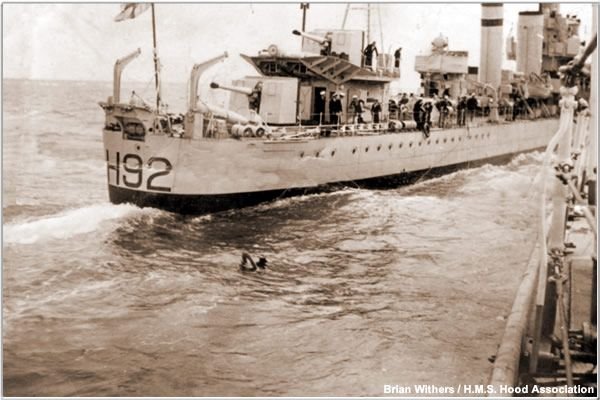
and links to higher definition photos - https://i.pinimg.com/originals/cb/1c/70/cb1c700a04541ee2356ef9efa0c5439a.jpg and https://i.pinimg.com/originals/48/84/69/4884695873e57a0ef98a10aaa8697b78.jpg .
- popeye the sailor, Piet, Jack12477 and 3 others
-
 6
6
-
Just did a bit of a Google search for pictures of the Glowworm. There's some good ones at http://navalwarfare.blogspot.com/2009/06/hms-glowworm-h92.html https://wrecksite.eu/wreck.aspx?15989 and http://forum.netmarine.net/viewtopic.php?t=3502 (this one's in French, but Google Translate should help if needed - unless you're already fluent, of course. Zut! Alors . . .) and Russian . . https://u-96.livejournal.com/2670604.html with at least one photo the others don't have. Plus these two
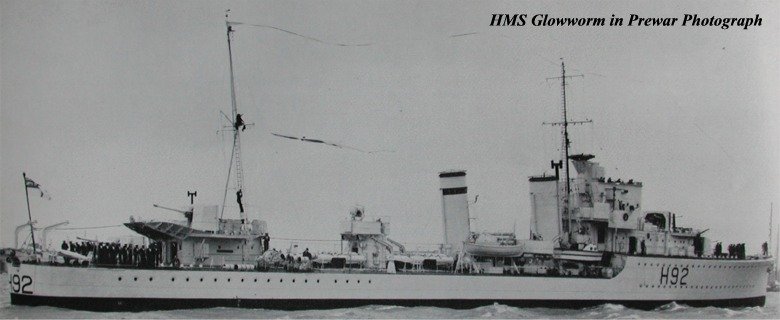
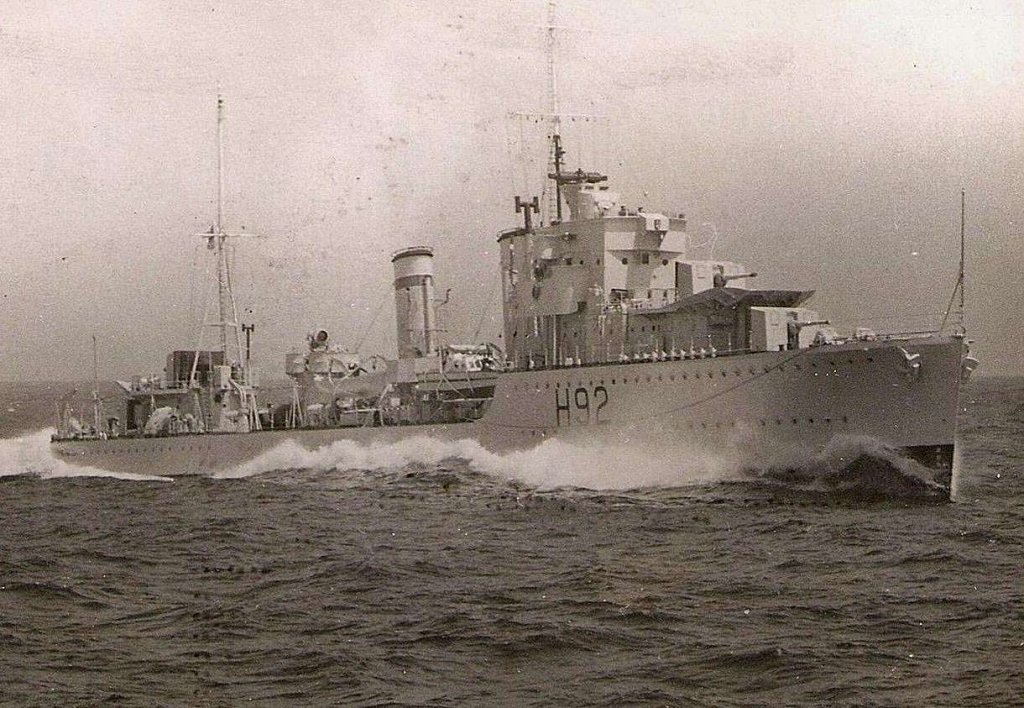
I hope these help.
Steven
-
Nice work, Javier, particularly at such a small scale.
I suppose the skids on the bottom are to help run the boat up onto the beach (which is large flint pebbles, if I recall correctly).
Looking forward to following your progress on this one.
Steven
- mtaylor, thibaultron and Jack12477
-
 3
3
-
-
-
-
Beautiful work, Michael. A real pleasure to watch this build.
Oh, and I take comfort from the fact that even someone at your advanced level sometimes misses something (the attachment of the vent stack). I don't feel quite so embarrassed about my own boo-boos. Still embarrassed - I've got a long way to go before I even approach your level of skill - but not quite so embarrassed.
Steven
-
Very nice work, Pat.
Steven
- BANYAN, popeye the sailor, mtaylor and 1 other
-
 4
4
-
Or a lot of rice.
Off the subject a little, but still on the subject of measurement, an acre is an Anglo-Saxon measure of the amount of land that can be ploughed with a two-horse(?) plough in a day . . . (don't ask me about chains and perches and roods, let alone gills and bushels).
And the values of measurement units differed from time to time and from place to place, such as the French, Dutch and English values for the foot.
When they built the Olympias trireme reconstruction they used one value for an Ancient Greek unit (I think it was the cubit) but discovered in practice they would have been better using a slightly larger value from a slightly different time period, as there wasn't really enough room for the oarsmen (and women) to work the oars without interfering with each other.
And the Byzantines had the same thing with their various measures - palm, finger, hand etc. They kept changing, making it very difficult for historians to work out the sizes things had been.
Steven
-
I've done a preliminary fitting for the support system I'll be using for the lower oars, to see if it will work. A number of cross-members hold at the correct height a frame with a series of lines all at the same angle, as guides for the oars. The oars go through the oarports with the inner end resting on the frame and the outer end resting on a raised plane (currently two thicknesses of balsa wood) to simulate water level.
I've done my best to get all the oars as close to identical as possible, so they'll all be at the same angle vertically when they rest on the frame. Also, they'll be interchangeable so it doesn't matter which one goes where. The other quantity that has to be kept constant is how far the oars poke out from the hull, which is done by simply drawing a pencil line around the circumference of each oar at the point it goes through the oarport.
I've only tried it with three pairs of oars so far, but it looks like it will work. Now to get it all done properly, with everything lined up and glued in place. As I mentioned before I won't be putting the oars in till later on in the build so they don't get damaged while I'm working on other parts of the ship.
The two mast steps are still in progress - I'm making them like the ones found in the Yenikapi ships. Though they're more complicated than my original version I think it's good to do it the way it was done back in the day if at all possible. The blocking piece is shown above the two mast steps. Sorry about the photo quality.
At some point I have to correct the line of the beam shelf - it's a bit wonky and has to be made into a smooth line, or the deck beams - and the deck itself - will also be wonky. As can be seen in the photos, the line wobbles very slightly all along its length.
As the beam shelf so narrow and flexible, I can probably correct it by cutting it away from the frames at the offending places and re-glueing it in the correct position. If not, I'll have to cut and fill till it's correct.
Steven
-
-
That's a really nice jig, Dick. Simple and effective.
As you're moving only one side of the jig and keeping the other side static, I take it you've arranged the graduated distances on the background to compensate for the lack of symmetry.
Are the second two photos above identical ? I can't see the difference between them.
Steven
-
That's a good reason to go two-masted, Mark. Galleys in general are not too stable.
I think sail would be preferable while journeying - assuming the wind was in the right direction, so the ship wouldn't heel over too much.
Oars definitely under battle conditions - in fact the masts were lowered and stowed. For maneuvrability and also to remove overhead hazards.
Steven
- Mark Pearse, mtaylor and cog
-
 3
3
-
-
Here are the sail plans I've arrived at - I still haven't decided to go one or two-masted, but both look better than previous versions. The dimensions no longer tie in with those of Age of the Dromon - I've decided that a gap of 200-300 years and different shipbuilding traditions, plus the different form of the two types of ship are enough to discount the Sicilian ships as a source of information. Instead, I'm going with size and placement of sail(s) to achieve the position of Centre of Effort needed to make a lateener sail properly, based on the theory outlined on the previous page of this build log.
I've also made a prototype of the Byzantine mast step assembly shown in my reconstruction diagram above. I did this in a hurry and in a poor light, so it's a bit rough. To put in the model I'll do a better job and make it complete - cutting it to width and with side pieces to hold it on the keelson.
But it seems to work!
Steven
- mtaylor, John Allen, druxey and 5 others
-
 8
8
-
-
-



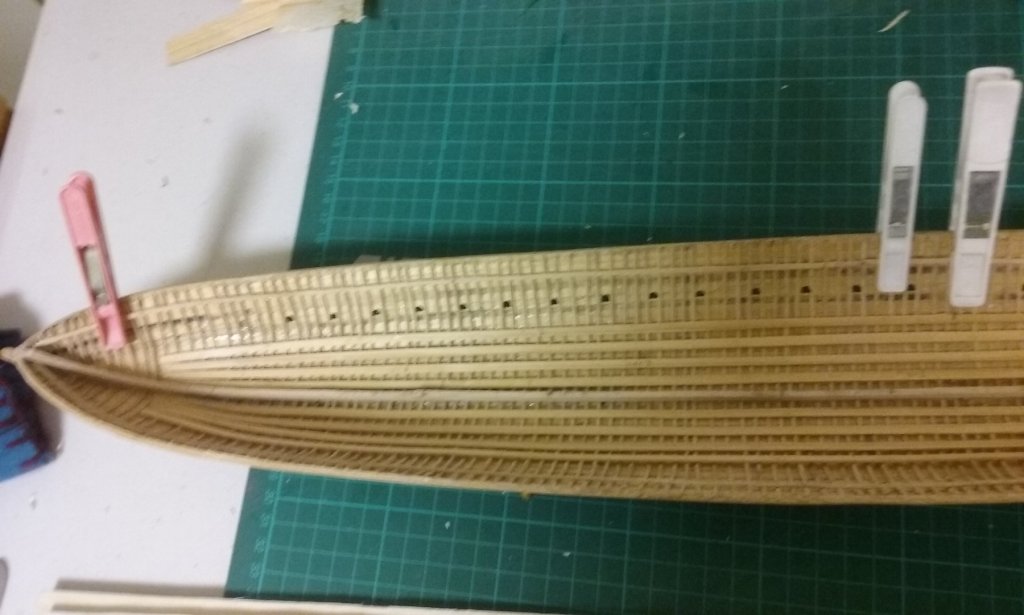
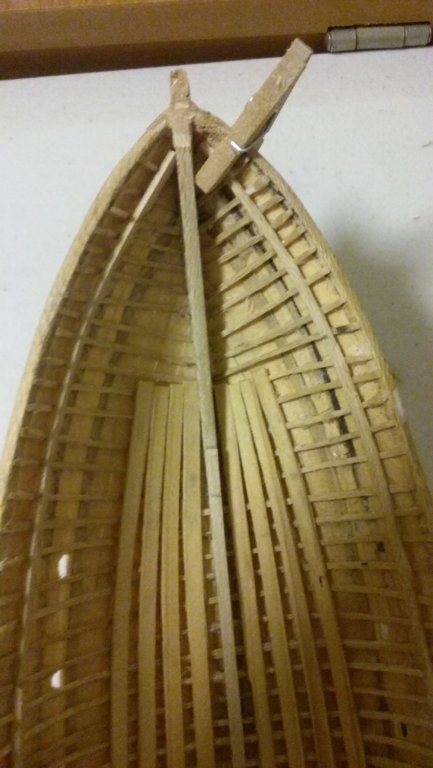
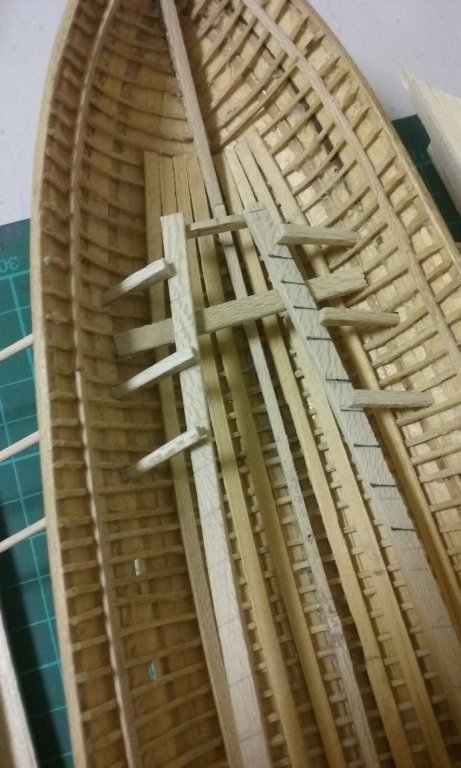
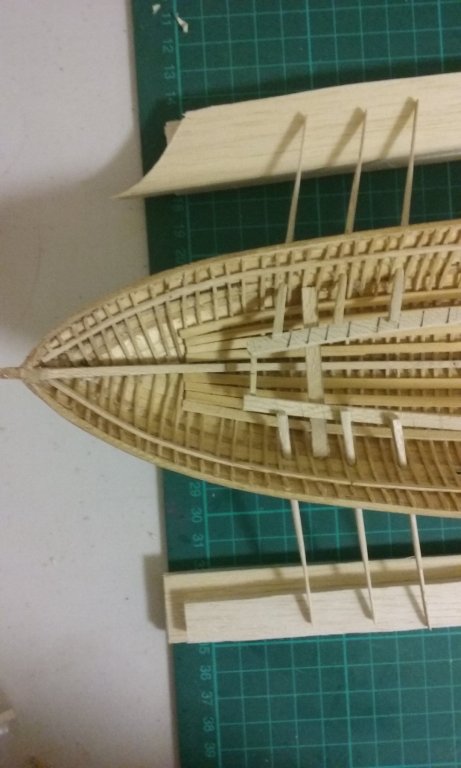
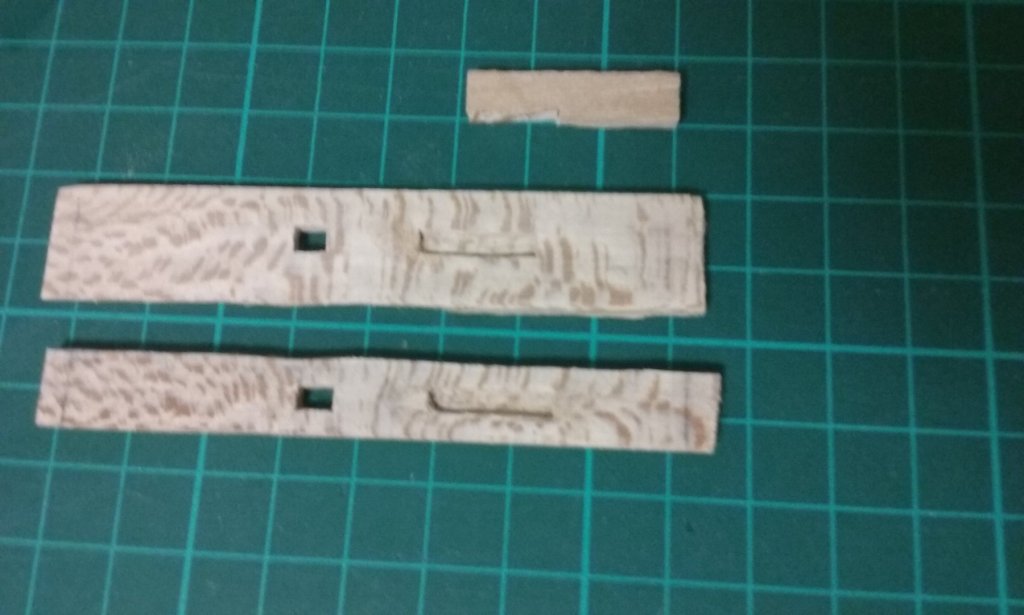
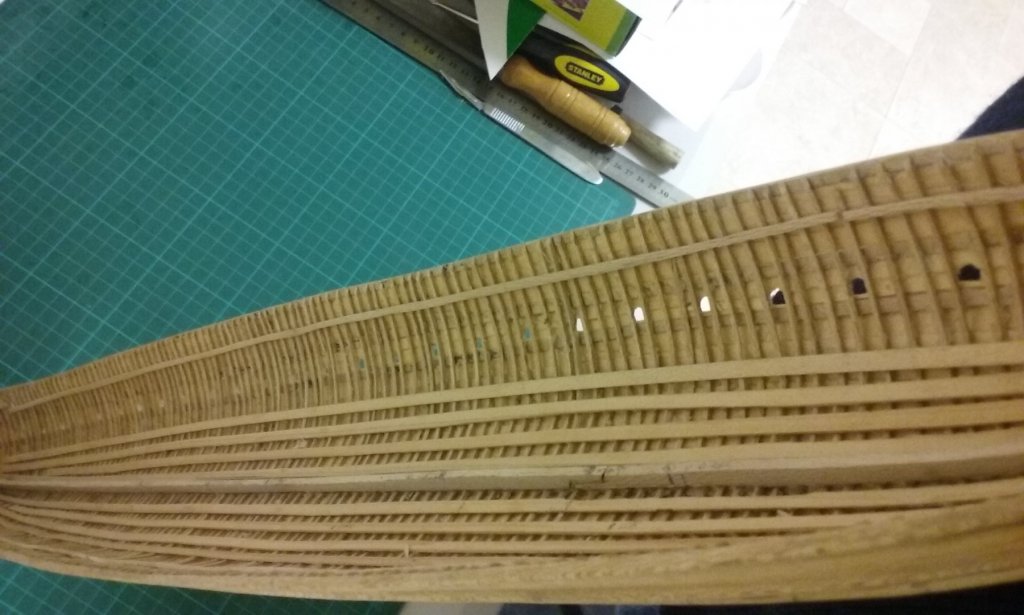
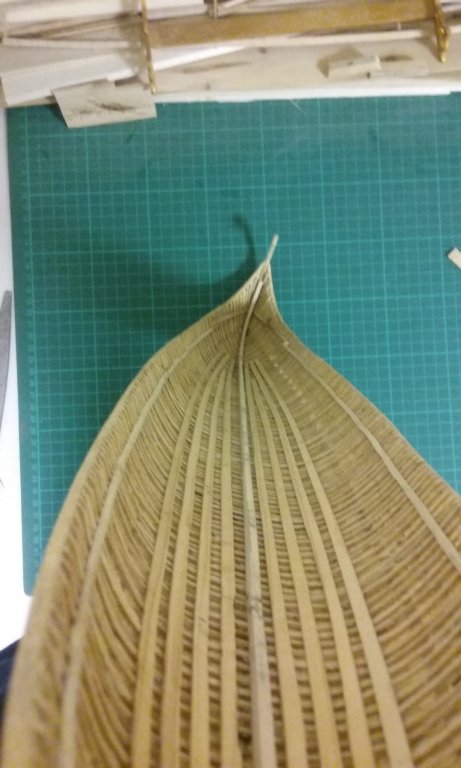
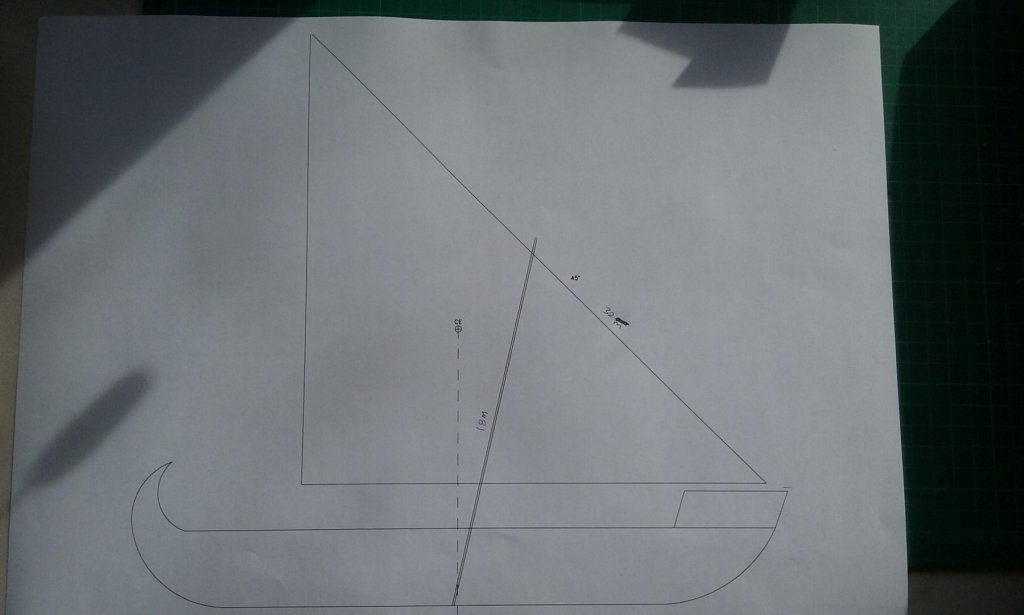
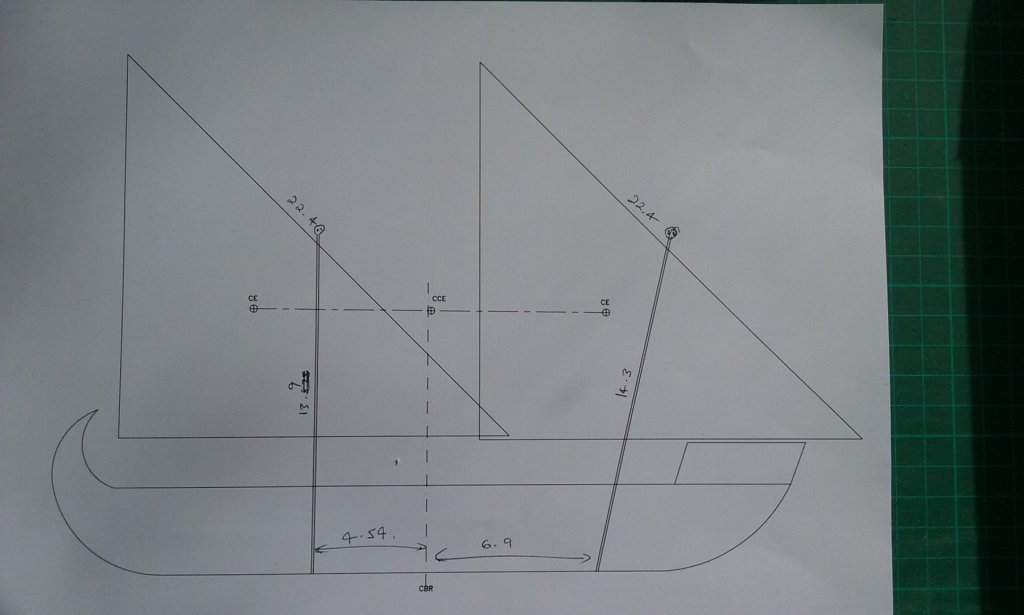
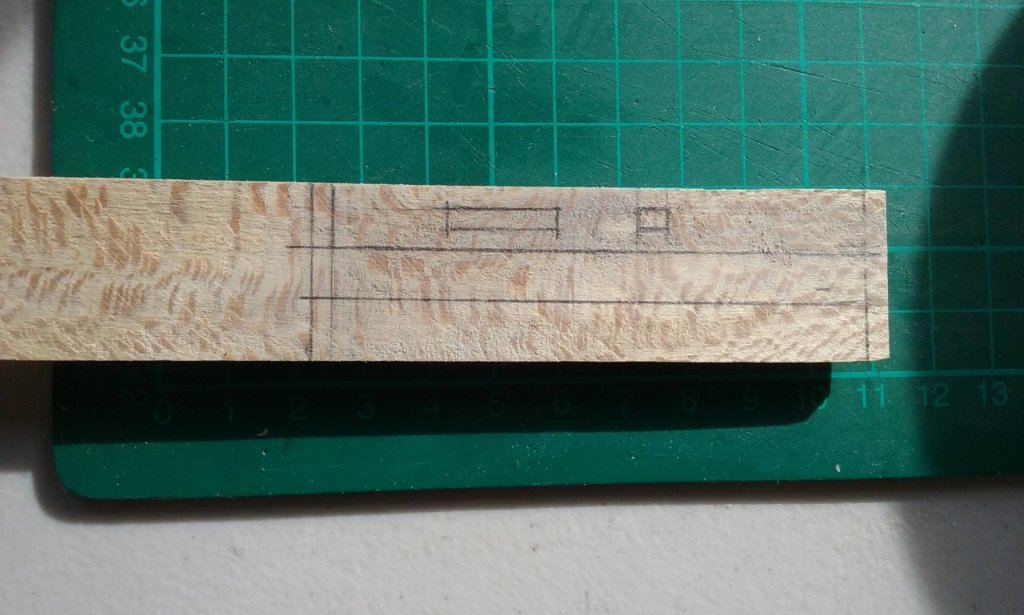
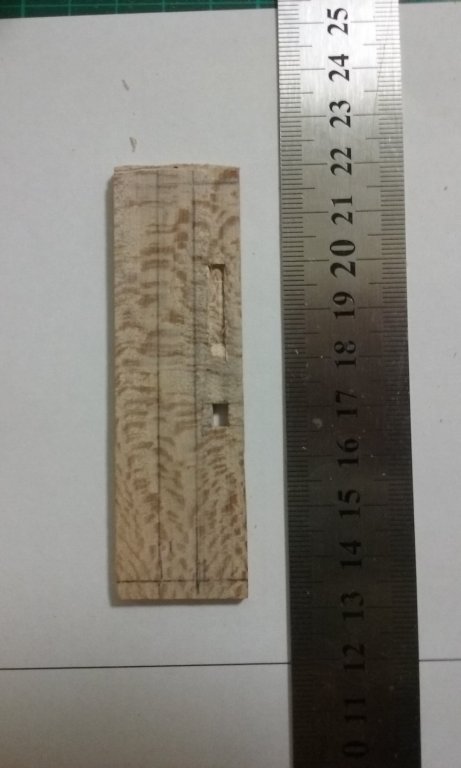
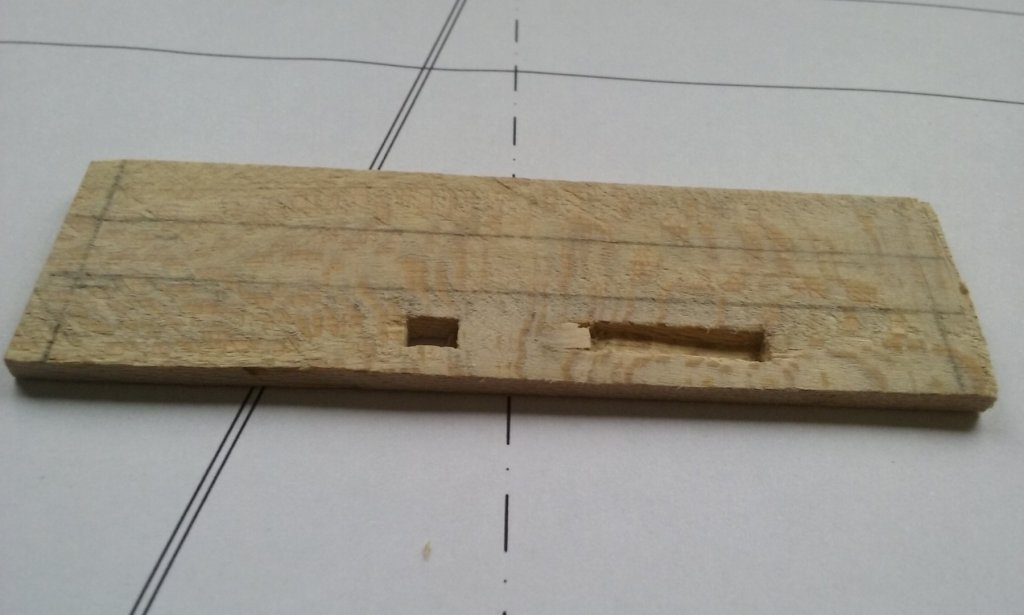
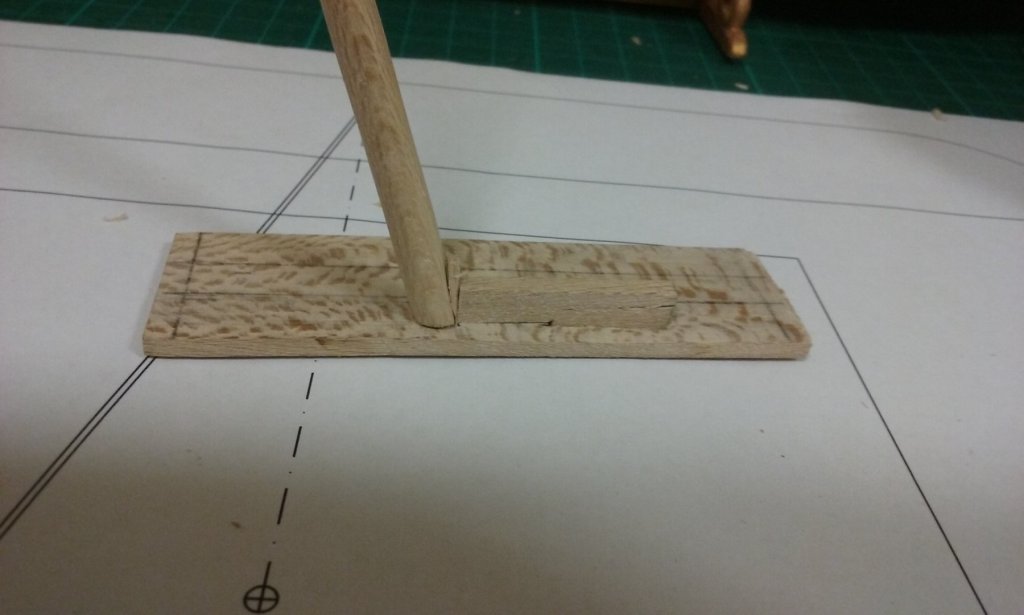
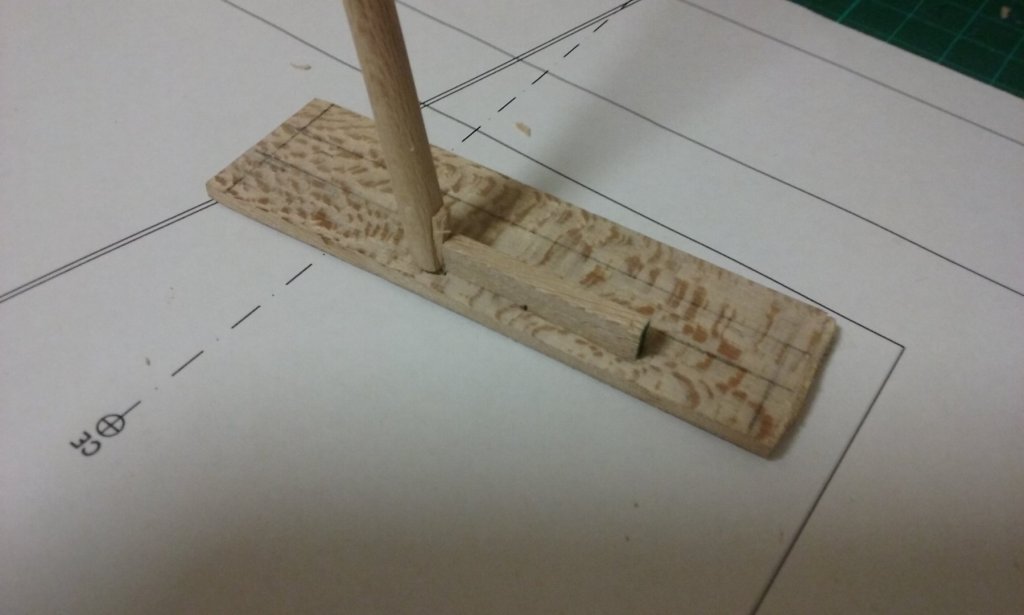
Ragusian Carrack by greatgalleons - FINISHED - Marisstella - 1:59
in - Kit subjects built Up to and including 1500 AD
Posted · Edited by Louie da fly
Yes, that's the Italian name for it, and the name of the republic of Ragusa from the 14th to the early 19th century. It's apparently where we get the name "argosy" meaning a fleet - not, as I'd thought, from Jason's ship Argo.
A very nice body of work, GG. And the carrack is very finely done.
Steven